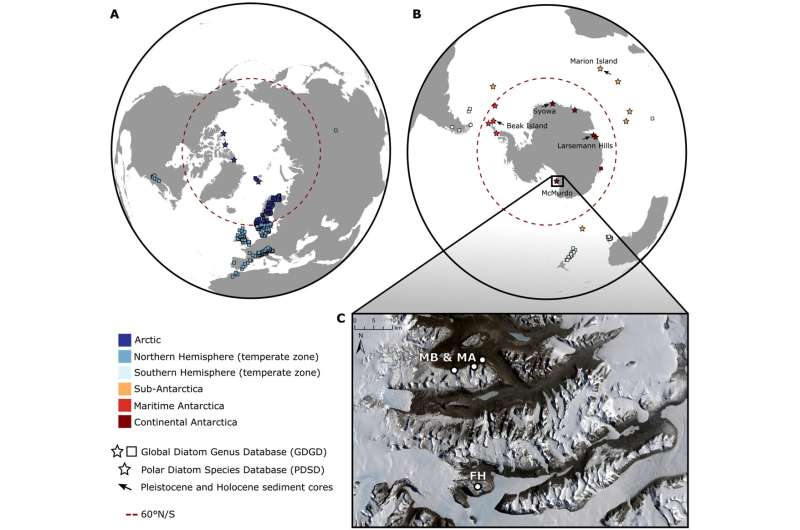Microorganisms are sensitive to large-scale climate change in Antarctica

For a long time, scientists assumed that microorganisms, due to their broad distribution patterns, were much less affected by such climatic changes than plants and animals that often present very limited distribution areas. By examining fossils of Antarctic microorganisms, an international team led by researchers from Ghent University and Meise Botanic Garden showed that this assumption is incorrect.
During the Early Miocene, about twenty million years ago, the Antarctic Continent had a temperate to subpolar climate. The continent was largely covered with tundra vegetation and forests. This situation changed abruptly when fourteen million years ago, the continent began to cool down rapidly with ice sheets expanding over Antarctica, and plants and animals becoming extinct on a massive scale.
A diverse Miocene flora of diatoms
The researchers analyzed diatoms in 14 to 15-million-year-old Antarctic lake sediments, deposited just before the great Miocene cooling began. Diatoms are one of the most diverse and ecologically important algal groups in the world and can easily fossilize thanks to their cell wall made of amorphous glass.
To their surprise, the team discovered more than 200 species of diatoms in the sediments. Virtually every species was new to science. For this reason, the researchers further analyzed the lake sediments at genus level, the classification level above the species. This analysis showed that the species composition in Miocene Antarctica was quite different from the diatom flora characteristic of Antarctica today, which has far fewer species. Instead, the Miocene diatom flora shows similarities with species-rich floras currently found in warmer regions of the southern hemisphere, such as South America, Australia and New Zealand. Based on these results, the researchers concluded that the Miocene diatom flora has largely died out in Antarctica due to the major climate changes of fourteen million years ago. The researchers postulate that the extremely species-poor diatom flora which characterizes Antarctica today evolved from the few survivors of the Miocene flora and new settlers that are adapted to cold conditions.
Extinction waves due to climate change
The researchers conclude that major climate changes, such as those in Miocene Antarctica, could have dramatic consequences for microorganisms and may lead to large-scale extinction waves. Since micro-organisms play a crucial role in the healthy functioning of ecosystems, it is crucial to better understand the impact of a changing climate and environment on their diversity.
More information: Eveline Pinseel et al, Extinction of austral diatoms in response to large-scale climate dynamics in Antarctica, Science Advances (2021). DOI: 10.1126/sciadv.abh3233
Journal information: Science Advances
Provided by Ghent University





















